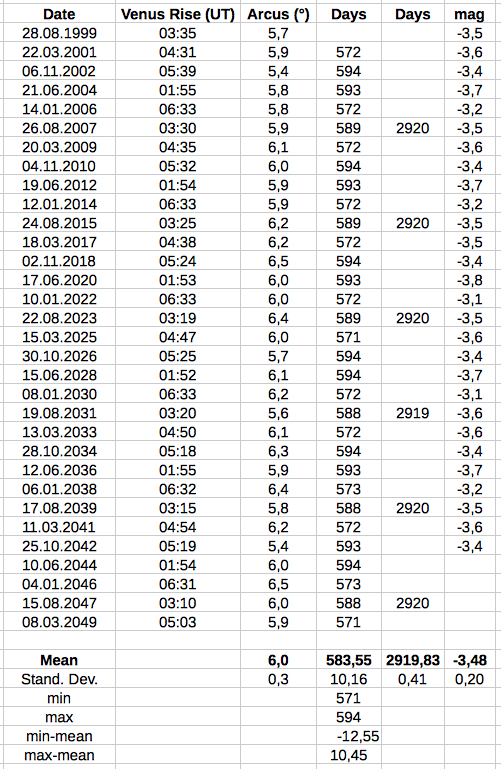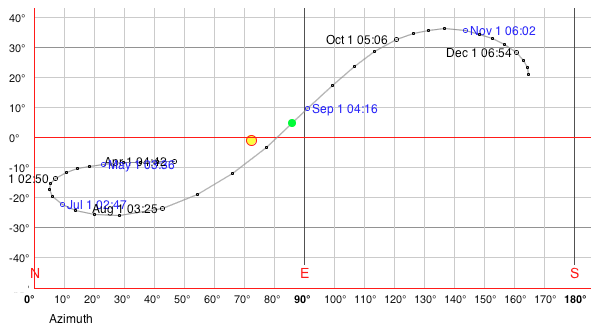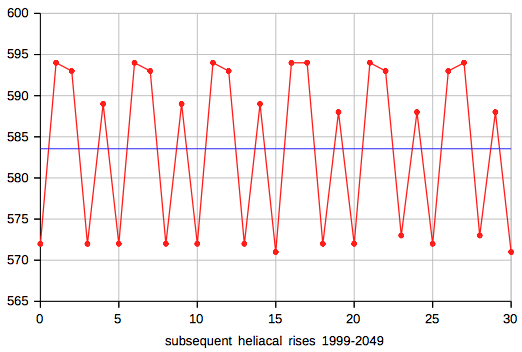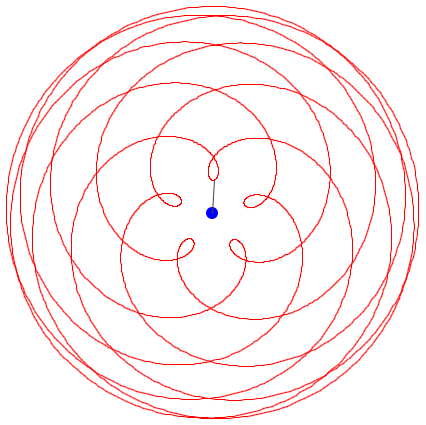Heliacal Rising of Venus
| The heliacal rising of a star or a planet
occurs when it first becomes visible above the eastern
horizon in the morning twilight sky for a brief moment
just before sunrise, after a period of time when it had
not been visible. Heliacal rising is also referred to as first visibility, first appearance, morning rise or dawn rising. The table is showing the dates of heliacal rising of Venus for 1999 to 2049, computed by my "PlanetObserver" applet. There are several factors to be taken into account determining the date: • the arcus visionis, the distance between the body and the sun, measured in degreesperpendicular to the horizon, • the visual magnitude of the star or planet, • on the difference of azimuth between the body and the Sun (which is small for the planets), • atmospheric extinction, • latitude of observation. My table is computed for a latitude of 52.5° N, 13.4° E (Berlin), and an arcus visionis of 6°, proposed in a paper of C. Schoch.  The diagram from my "PlanetObserver" applet is showing the position of Venus at sunrise on 1999 Aug 28, and her position at sunrise until december, which means that the visibility of Venus is increasing.  Interval (days) of subsequent heliacal rises of Venus:  The table is showing a period between (583.6 - 12.6) and (583.6 + 10.5) days, including the synodic period of Venus (583.92 days), and a period of 2920 days: 2920 d = 8 · 365 d = 5 · 584 d
There are 5 synodic periods of 584 days within 8 vague years of 365 days. |
Updated: 2015, Jan 29
